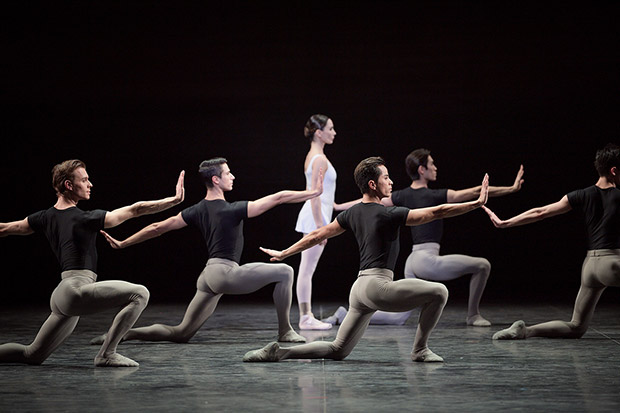
© Laurent Liotardo. (Click image for larger version)
English National Ballet
Song of the Earth
★★★★✰
Streamed archive recording of October 2017 performance at the Palace Theatre, Manchester. Relay 17 June 2020
www.ballet.org.uk
Part of ENB’s #WednesdayWatchParty, #ENBatHome series
While ballet companies have generously been streaming archive recordings of their productions during lockdown, audiences at home should understand how and why they were made. They are often a record for the company of a production, its choreography and a single cast’s performance. For the most part films or videos are not necessarily licensed for commercial use (apart from brief extracts for publicity purposes). Exceptions have been made during the corona virus crisis, with the relays available to view for just a few days or hours.
For those of us accustomed to watching live (or Encore) screenings in cinemas or on TV, the framing and camera angles of archive recordings can be disconcerting. New York City Ballet’s screening of Balanchine’s Apollo veered into the wings, showing the three Muses waiting to enter. English National Ballet’s recording of the company’s premiere of MacMillan’s Song of the Earth barely registers the presence of the two singers, contralto Rhonda Browne and tenor Samuel Sakker.
What the recording, professionally made by Lion Eyes TV and edited by the BalletBoyz, does show is the choreography and the performances by Tamara Rojo as the Woman, Joseph Caley as the Man and Jeffrey Cirio as the Messenger of Death. This not how we would watch the ballet in a theatre, with the dancing unspooling in the space beyond the proscenium arch. Here, the background is barely visible, the depth of the stage flattened to two dimensions, and the soloists featured in close-ups, albeit full length ones.
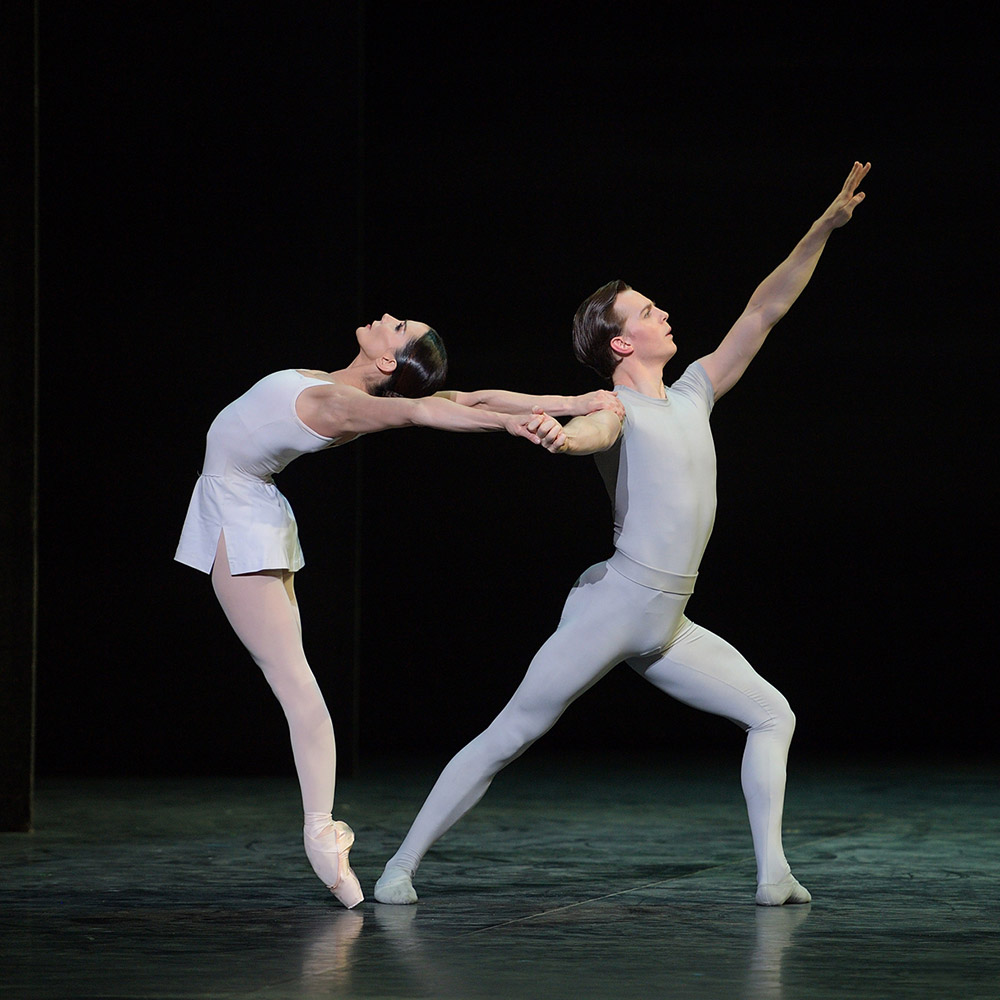
© Laurent Liotardo. (Click image for larger version)
The Man and the Messenger are present from the start, soon merging with revelling young men in the first song. Close-ups make it clear that Cirio, all in black, is wearing a flesh-coloured half mask – not immediately obvious in the theatre. MacMillan wanted Der Ewige, the eternal one in German, to appear much like the others – ‘rather a nice guy, just there, always hanging about’. Since Cirio is not tall, his presence is not too imposing, though the recording does make his appearances conspicuous by the end of the songs.
Caley is a neutral figure in pale grey, an Everyman rather than a desirable romantic partner for the Woman. She first appears in the second song, Autumn Solitude, always distinct from her companions, including the demi-soloists, Senri Kou, Alison McWhinney and Tiffany Hedman. They are carefree in songs about youthful pleasures, while Rojo’s dark eyes tell of her isolation and foreknowledge of death. Her emotions are inward, her loneliness held in check.
The recording reveals how unusual the choreography is, as it was in 1965 for the Stuttgart Ballet and then the Royal Ballet. Dancers in pointe shoes have to adapt to flexed feet, flat-footed parallel positions, torsos bent forward, elbows and wrists held at angles. Men sink into deep pliés, tumble and lie on the floor. MacMillan was making use of contemporary dance innovations as well as orientalisms, echoing the Chinese poems that are the lyrics of the six songs. The women’s bent arms might have supported kimono-like sleeves, until the choreographer and his designer, Nicolas Georgiadis, decided to pare intended costumes down to a version of practice dress.
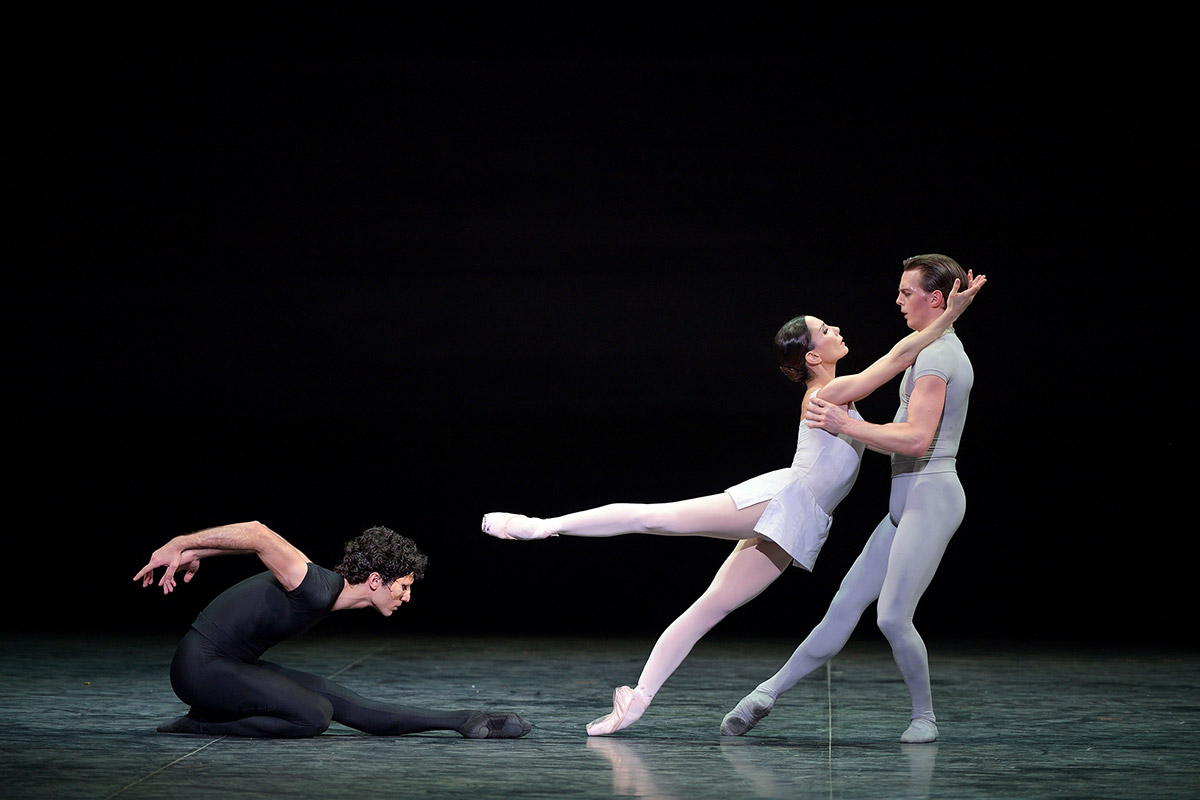
© Laurent Liotardo. (Click image for larger version)
Strangest of all is the pas de deux for the Woman and Man to an orchestral interlude at the start of the long final section. It is not a love duet (though sometimes performed as though it is) but a ritual for two beings in the grip of fate. Rojo, who danced the role many times with the Royal Ballet, understands that there is no need to emote. She doesn’t meet the Man’s eyes as he manipulates her, holding her elbows behind her as though she is in a strait jacket. She falls rigidly into his arms, first backwards, then face down. When she does acknowledge him as her partner, her longing is palpable: she hangs onto him as the Messenger comes to claim him.
Cirio is implacable, not cruel. Though he takes the Man away, he brings him back, this time with a half-mask, signifying death. Rojo has meanwhile come to terms with the Woman’s fate, stepping between the outstretched forms of the men like the Chosen One in MacMillan’s Rite of Spring. Legs and feet in parallel, she bourrées around the stage as though tugged by a force outside her control.
The effect of the ballet’s sublime ending, with the Woman, Man and Messenger stepping into eternity, is nullified by keeping the camera on the performers instead of pulling away to show them transfigured, floating in space. For archive purposes, the recording has to show how all three manage to keep in step, wrists touching, as the singer repeats Mahler’s final words – ‘for ever and ever ‘. [To see the ending as it should be filmed in the theatre, watch the clip on YouTube of Darcey Bussell’s final performance in the Royal Ballet’s Song of the Earth.]
We must be grateful, however, for being able to see ENB’s production, however briefly, with its luminous central performance by Rojo. She judges the shifts between the Woman’s inner anguish and stoic endurance perfectly, with consummate technique. She enables the choreography to convey the music’s contemplation of the inevitability of death without gratuitous pathos. There are fine supporting performances from Cirio and Caley (both making their debuts in the recorded performance) and from Kou and Hedman in solo roles. Provided you knew MacMillan’s Song of the Earth already, the streaming allowed you to reimagine the experience of seeing the ballet live, its singers and dancers on stage in three dimensions. May they come back, to move us again in a theatre.












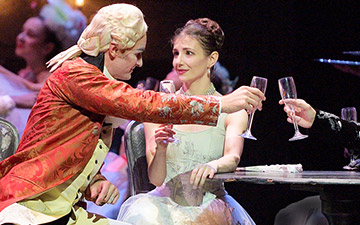



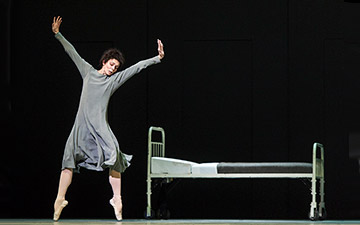
You must be logged in to post a comment.